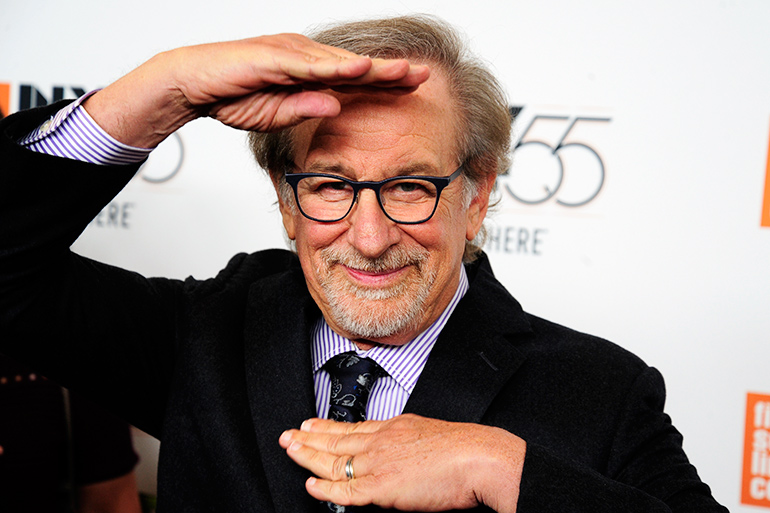Pivotal Moment: Things Changed When Steven Spielberg Bought a House in East Hampton

Steven Spielberg bought a home on West End Avenue in East Hampton in 1977, when the Hamptons was not yet The Hamptons. A good case can be made that, like Moses leading his flock, his moving here caused the start of the rush of actors, directors, producers, writers and other film people who now comprise, on certain occasions, what seems to be 101% of the entire population in these parts.
But if Spielberg has had an enormous influence in the Hamptons, it’s also true that the Hamptons has had a noticeable influence on him. Besides Jaws, which began as a best-selling book about the Hamptons and was originally scheduled to be filmed in the Hamptons, he has made a second award-winning film about a trial that had its obscure beginnings aboard a slave ship anchored offshore Montauk with some of its crew coming ashore, and he acted as executive producer for a third movie whose ending featured a tsunami that hit the Hamptons (the scene filmed in Amagansett).
Steven Spielberg was just a promising young filmmaker from suburban Los Angeles when he was approached by Universal to direct the movie Jaws. He became familiar with the book. Author Peter Benchley presented the Hamptons—mentioning some of our towns by name—as the beautiful and quiet peninsula it then was, as a community where the mayor was terrified not of the man-eating shark but of the fact they had a man-eating shark that, if it became public, would ruin that year’s summer resort season.
I do not know how Spielberg arrived at the decision to move here, but he certainly must have toured the Hamptons with other studio bigwigs and decided that it was indeed quiet and beautiful, but not quiet enough to make the plot plausible. So instead, the movie was filmed on an island, Martha’s Vineyard.
It was soon after the movie was made—it premiered on the East Coast in 1975 at East Hampton Cinema, with the actors and filmmakers getting the full red-carpet treatment right here on Main Street—that Spielberg and his then-wife, Amy Irving, bought a property at the head of West End Road in East Hampton and made it into the compound of buildings that it is today. Soon thereafter, the two major costars in that movie bought homes in the Hamptons. Roy Scheider, the chief of police, was one. Richard Dreyfuss, the young scientist, was the other. A third, Robert Shaw, who played the fisherman Quint, died of a heart attack in 1978. There seems little doubt though that Quint, the shark hunter, was modeled both in the book and the movie on the irascible Montauk shark hunter Frank Mundus. Both were loud, self-absorbed, rifle-toting personalities.

In 1997, a few years after filming his award-winning film Schindler’s List, about the evils of Nazi Germany, Spielberg took on the evils of slavery by filming a little known incident involving Cinque, a slave from Africa kidnapped by slave ship to Cuba, who, along with 50 other slaves, was being transported to a smaller ship along the Cuban coast to the plantation of a new owner. They broke their chains and rebelled, took over the vessel and made the ship’s crew, now hostages, sail the ship La Amistad away from Cuba and back to Africa.
By day, they sailed toward the morning sun, which the slaves knew was the correct direction, but by night, the crew, with no sun visible, sailed north, soon arriving as an almost floating wreck off Montauk. There, Cinque and others went ashore briefly for directions and supplies, and during that interval an American frigate by chance appeared on the horizon, took over the ship, gathered up Cinque and the others, and accompanied La Amistad to Connecticut.
The trial of Cinque, the ringleader now accused by Spain of kidnapping Spanish citizens and murder—the captain had been stabbed—was the subject of the rest of the film. In the end, Cinque was convicted—President Martin Van Buren at the time did not want to make this into an international incident with Spain—but with Cinque sentenced to be returned Africa, courtesy of the U.S. Navy. This was done, and Cinque, who cared little about any celebrity status, disappeared into his tribe and never was heard from again.
Spielberg might have known about this incident, because Dan’s Papers amongst others had published an account of it a few years prior. Amistad had not been the title of a book, as far as I know. In any case, the film, which starred Anthony Hopkins, Morgan Freeman and Matthew McConaughey, was an artistic success and further burnished Spielberg’s reputation.
The third film with connections to the Hamptons was Deep Impact, an end-of-the-world movie that according to scientists fairly accurately described what we were in for in the event a meteor struck the planet. The tie-in was only one scene, but it was filmed in Amagansett. People were placed on the beach to be the recipients of the enormous tsunami that resulted from the meteor’s splash into the north Atlantic—it was CGI’d in, since we didn’t exactly have a tsunami—and some friends of mine were extras in that scene, in which they were to express horror and panic.
Spielberg lives a very private life on his compound at the head of West End Avenue. He’s rarely seen in public. But he, together with his second wife, Kate Capshaw, and their children are here, and we are proud to have them.




